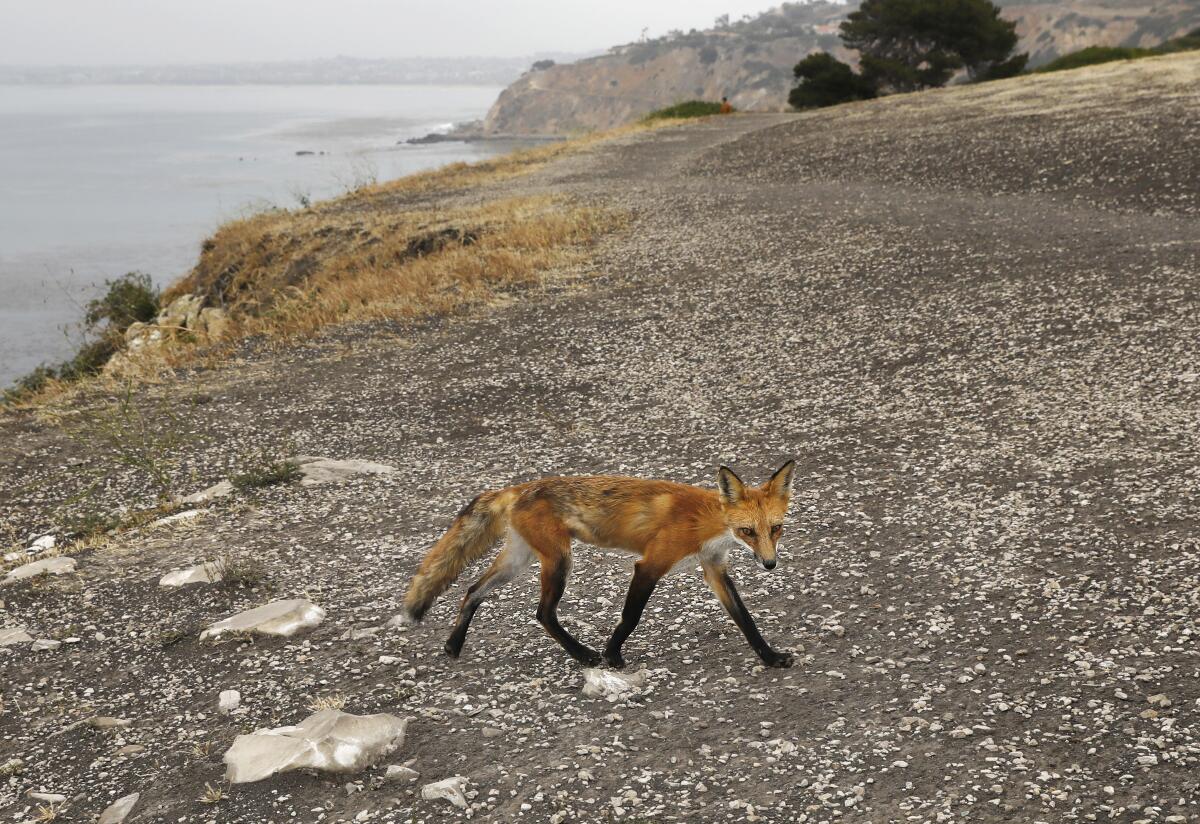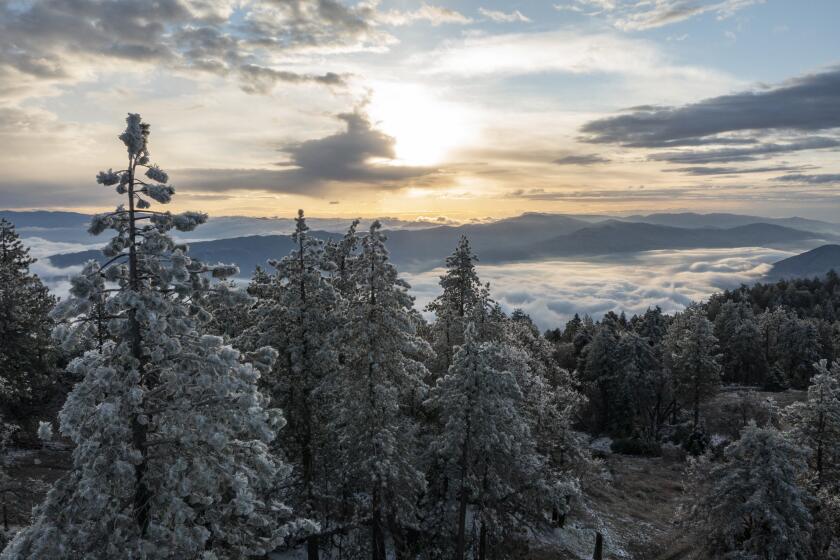Conservationists want 96-acre wildlife corridor on Palos Verdes Peninsula

- Share via
Conservationists are aiming to carve out nearly 100 acres on the Palos Verdes Peninsula to restore and protect native wildlife by shielding the area from development.
The Palos Verdes Peninsula Land Conservancy and the city of Rancho Palos Verdes are partnering on a $30-million fundraiser to create a wildlife corridor across the peninsula.
The campaign, dubbed “Go Wild for the Peninsula,” aims to restore natural and coastal lands across the Palos Verdes Nature Preserve and create a 96-acre wildlife corridor to protect some of California’s — and the nation’s — most vulnerable species, such as the rare Palos Verdes blue butterfly, the El Segundo blue butterfly, the monarch butterfly and the coastal California gnatcatcher, among other threatened wildlife.
“We know that the results we are going to achieve by garnering all of this public support are going to help address a lot of what the public is concerned about, which is protecting this natural, open coastal land from development,” said Adrienne Mohan, executive director of land conservancy.
A corridor is being funded, designed and constructed by Great Park developer FivePoint Holdings, working alongside the environmental group Laguna Greenbelt.
Extensive habitat restoration efforts and wildfire risk mitigation will be needed, Mohan said. One plan is to replace invasive plants that pose a serious risk for wildfires, such as mustard weed, with drought-tolerant native plants, including California bush sunflowers. The organization also is bringing 300 goats to graze on overgrown invasive weeds, such as fennel, ice plant and other non-native plants.
The Palos Verdes Peninsula Land Conservancy has already raised more than half of its fundraising goal. In 2021, the organization received a $12.6-million grant from the Fish and Wildlife Service’s Cooperative Endangered Species Conservation Fund Grants — the highest award for the year nationwide. California’s Wildlife Conservation Board also chipped in an additional $4.8 million, the city of Rancho Palos Verdes contributed $1.3 million and the L.A. County Regional Park and Open Space District donated $1 million, bringing the total amount raised so far to $19.7 million.
Mohan called the grants and donations “an alignment in the stars” and said the group will now rely on public and private donors to help reach the remaining $10.3-million goal.
Bear Mountain, a refuge for cougars, mule deer and bobcats, has been added to the Nature Conservancy’s new Frank and Joan Randall Tehachapi Preserve.
In a statement, California Assemblymember Al Muratsuchi said he’s gratified to see how the project is helping California achieve it’s “30 by 30” initiative, an executive order signed by Gov. Gavin Newsom in October 2020 that aims to conserve 30% of its natural land and coastal waters by 2030.
“The partnership between nonprofits, local government and resource agencies are all working together to achieve environmental wins that will benefit everyone,” Muratsuchi said.
More to Read
Sign up for Essential California
The most important California stories and recommendations in your inbox every morning.
You may occasionally receive promotional content from the Los Angeles Times.












